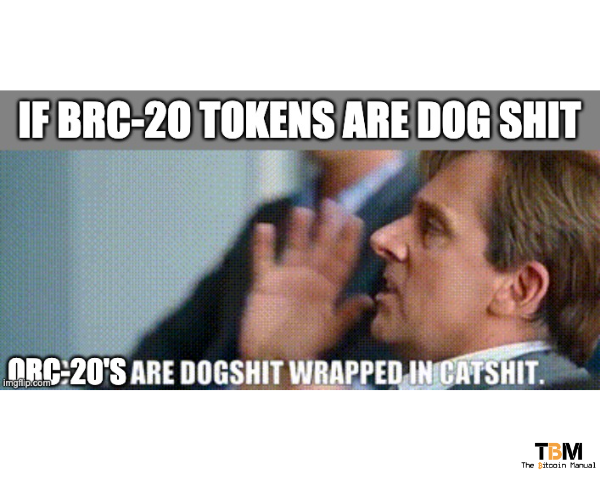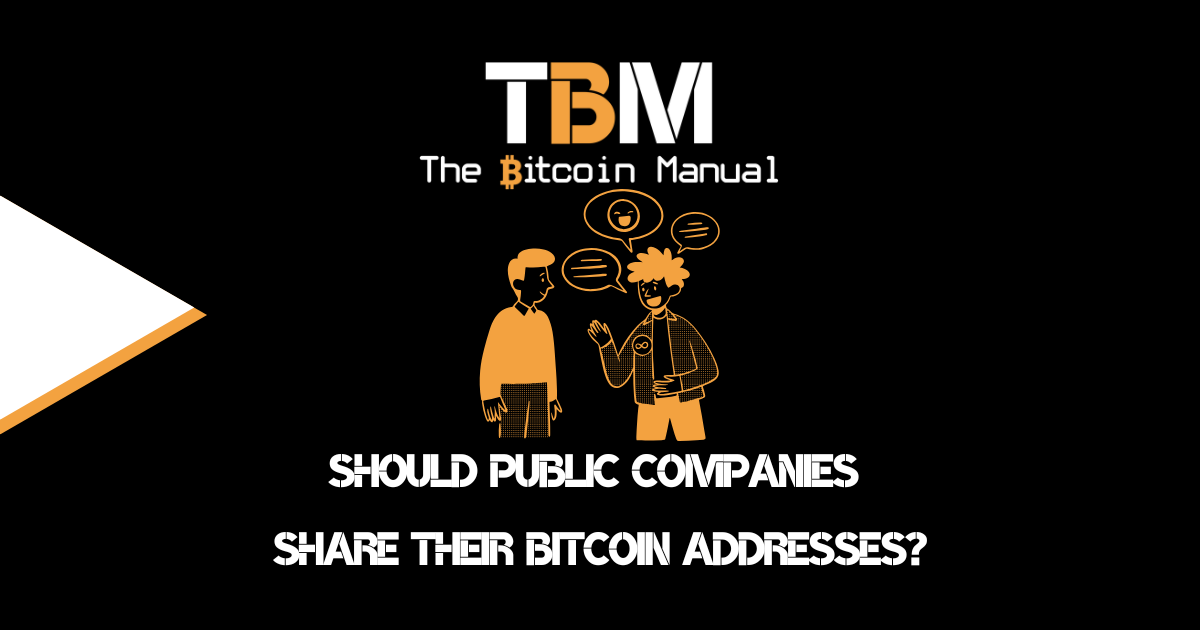If you’ve been out to lunch for a minute and tried to perform any transaction on the Bitcoin blockchain, you’d probably get slapped with a massive bill in fees or a painfully long waiting time to confirm your transaction. While miners are busier than ever trying to secure the next block, there’s a limit to how many transactions they can fill in a block, especially when those transactions have arbitrary data in it, used on a secondary market.
So what gives?
Why are Bitcoin transactions so expensive, and why is the mempool backed up like an entrance to any arena where Taylor Swift is performing?
Well, standard Bitcoin transactions are not to blame; your basic transaction, multi-sig or Lightning channel, has a clear incentive to try and perform the cheapest transactions possible.
Why? Because no one wants to pay more than they have to in order to secure a transaction.
But the ordinal theory has changed the way a cohort of people uses a Bitcoin transaction. Ordinals have opened up the ability to associate files added to the blockchain with certain satoshis, linking them with serial numbers.
Ordinals and inscription NFTs were the first to break through the gate; then, the protocol was reworked to inscribe fungible tokens on top of satoshis, now known as BRC-20 tokens. The ability to add tokens on top of Satoshis has seen a secondary market spring up where these tokens can be traded. The underlying satoshis are just the method of collection and transfer of the BRC-20 tokens, which is why you’ll see people paying $40 – $80 in fees to move 200 to 300 satoshis ($0.03-$0.07).
These transactions make no sense from the perspective of someone looking at it on-chain through a block explorer unless you’re using an Ordinal Block Explorer that will show you the tokens attached to those satoshis.
This is where you can see the secondary market, where those 200 to 300 satoshis could fetch up to $2000 dollars based on the BRC-20 token inscribed on them. BRC-20 tokens have attached a bunch of traders looking to profit from this new market, trading low-cap tokens that are illiquid and hoping to catch a bid for either the token they minted or being the first to purchase a set of newly minted tokens.
These speculative traders or degens are the ones bidding up block space to secure these inscribed satoshis or trade it between one another. Since all the trading for these tokens happens on-chain, we’ve seen a flurry of transactions hit the mempool.

BRC-20 tokens have their limits.
The current BRC-20 token standard is pretty static; once minted, there’s nothing much you can do with it other than try to sell it on the secondary market when compared to that of ERC-20 tokens which have other gimmicks like staking or inflation issuance over time to maintain interest.
BRC-20 tokens are minted all at once, attached to satoshis required to mint the immutable supply and maximum mint values; it cannot be changed, and it also has restricted naming space for tickers to four digits.
BRC-20 tokens rely heavily on external centralised indexers for inscribed transfers and bookkeeping, making it harder to trade and make secondary markets for these inscribed satoshis.
All these early issues have prompted the need for improvements.
In comes the ORC-20
ORC-20 is an open standard for ordinal tokens on the Bitcoin network, created with the aim of adding new features to BRC-20. It is aimed to be backwards compatible with BRC-20, to improve adaptability, scalability, and security, and to eliminate the possibility of double spending, which has been an issue that plagued certain BRC-20 tokens.
As is the case with BRC-20 Tokens, ORC-20 is an experimental project, and there is no guarantee that the tokens created with this standard will have any value or utility. They might bring in new features, but they also could bring along a new set of issues, bugs and trade-offs that market participants will naturally exploit.
While BRC-20 tokens are currently the reason for block space bloat, The mines of Moria could soon be filled with ORCs, and we all know how well that went down for Gimlis cousins. As the brave fellowship laid waste to many an Uruk-hai, so too will Bitcoin maximalists have to deal with this new threat to Bitcoin middle earth.
What are ORC-20 tokens?
- ORC-20, like BRC-20 tokens, are JSON files added to the Bitcoin blockchain and inscribed onto satoshis with an ordinal serial number.
- The ORC-20 JSON format supports a wider range of formats and consists of key-value pairs.
- All ORC-20 data are case-insensitive.
- The transaction model is based on the UTXO model. In each transfer, the sender specifies the amount to be received by the receiver and the remaining balance to be sent to the sender, making them easier to transfer.
- Upon the completion of each transaction, the previous inscribed balance will no longer be in a valid state hence adopting the UTXO model.
- Each sends event can include a nonce. The sender can cancel a partial transaction by specifying nonce.
How are ORC-20 tokens different from BRC-20 tokens?
| Features | BRC-20 | ORC-20 |
|---|---|---|
| Built-in anti-double-spending | ❌ Difficult to index | ✅ UTXO |
| Allow passing initial mint (proxy mint) | ❌ Limit to minter | ✅ Track initial balance |
| Flexible naming space | ❌ 4 Letter | ✅ Any Size |
| Custom keys, eg. tax, msg, URL | ❌ Fixed keys | ✅ Flexible keys |
| Allow upgrade: max, lim | ❌ Non-upgradable | ✅ Upgradable |
Allow partial tx and cancellation | ❌ Immutable | ✅ Partial tx |
| Allow migration: BRC-20 ➡️ ORC-20 | ✅ Migrate to ORC-20 | ✅ Migration Wrapper |
Since the launch of BRC-20 tokens, a total of 8,500 different tokens have been minted using the standard, none of which have any real use other than being meme coins, such as PEPE and Memetic (MEME). While ORC-20 tokens have begun to see deployment on the chain over the last week.

How can ORC-20 tokens be used?
ORC-20 tokens offer a range of features, including:
- Deployment: Users can deploy new ORC-20 tokens or migrate existing BRC-20 tokens with a “deploy event”.
- Minting: ORC-20 tokens can be minted with a mint event.
- Sending: ORC-20 tokens can be sent with a send event.
- Cancelling: ORC-20 partial transactions can be cancelled with a “cancel event”.
- Upgrading: Existing ORC-20 tokens can be upgraded with an upgrade event (e.g., supply and max mint).
ORC-20 transactions are based on the UTXO model, and each transfer requires the sender to specify the amount to be received by the receiver and the remaining balance to be sent back to the sender. This approach allows for secure transactions and eliminates the possibility of double spending.
Some proponents of ORC-20 tokens claim that this will allow minters to migrate from simply making a new set of meme tokens to issuing equity in applications and businesses.
This unregistered securities market makes very little sense since businesses would like to know who owns and trades their equity. If you were a serious company that wished to leverage Bitcoin as a way to issue your equity, you’d opt for a regulated security token offering and issue it on a side-chain like the Liquid Network, which offers whitelisting for wallets and holders.
Migration of BRC-20 to ORC-20
ORC-20 protocol also facilitates the migration of existing BRC-20 tokens through the use of a wrapper ordinal. Using a “wrapper ordinal”, you can re-inscribe your previous satoshis and migrate to other ordinal token standards, such as from BRC-20 to ORC-20.
To migrate your existing BRC-20 tokens, you need to deploy a wrapper ordinal that can convert them. Only the deployer of the BRC-20 can make the migration.
So even if you purchased a BRC-20 token with a fixed supply thinking you’re holding a certain percentage of the supply, you can still be diluted should the minter of the token decide that they want to tap into the market demand and migrate to ORC and hand themselves a new supply of coins to dump on the market.
What does that smell like? Smells like rug pull technology to me.

Orcs are on the hunt for your sats.
The ORC-20 token standard presents a chance for traders to create even more tokens on Bitcoin, add more variations, play around with supply and issuance and create artificial scarcity for these tokens, only to tap into the demand hype by issuing new tokens to dump on the market.
They might make it easier for ordinal wallets to transfer without the need for users to use coin control to safeguard their inscriptions which will help get tokens to secondary markets and exchanges for trading. This will make it far easier for minters to dump their tokens on the market, access liquidity and make off like bandits with satoshis on-chain that cannot be clawed back once transactions are confirmed.
Again, if this type of trading and market speculation is your bag, go right ahead, but if you’re not the one benefitting from the seigniorage of printing your own tokens, all you are is the exit liquidity for another cycle of tokenomics.
Do your own research.
If you want to learn more about ORC-20 on Bitcoin, use this article as a jumping-off point and don’t trust what we say as the final say. Take the time to research other sources, and you can start by checking out the resources below.
A token of no appreciation.
So what do you think of ORC-20 tokens? Will it take off and move more speculation to Bitcoin? Will the tooling used to create these standards become widely adopted? Or will this all fall flat on its face like previous attempts to add non-native assets on the Bitcoin base chain?
Let us know in the comments down below.




